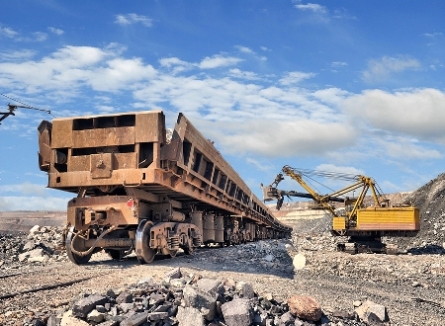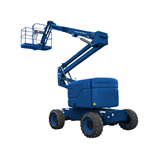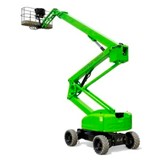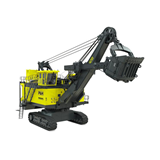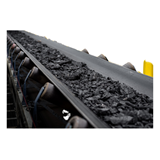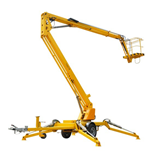IndustrySearch's Chris Williams digs deeper...
Since 2003 Australia's GDP has grown by 44 per cent. At the same time mining's share of GDP has more than doubled to the point where almost one fifth of all production in Australia is now in, or for, the mining sector. Meanwhile more than $400 billion has been invested in extraction, processing and transport infrastructure.
It's been the biggest mining boom in Australia since the gold rush, helping the country weather the global financial crisis, while at the same time funding major government initiatives. Most Australians have benefited either directly or indirectly – but now, according to some, it is at an end.
Adrian Hart, a senior economist and head economic analyst at BIS Shrapnel's Infrastructure and Mining Division, says the outlook will be tough, but stops short of any dire predictions for the local economy as the mining industry cools off.
"Are we going to have a recession? No we aren't, but for some of us it's going to feel like it," Hart told IndustrySearch.
"For a lot of businesses who feed off expenditure in the economy we are going to be feel like we are in a recession and it's going to be very tough.
The new boom
"What saves 2013-14 is the mining sector is moving from a construction boom to a production boom. We are seeing record levels of coal exports and record levels of iron ore exports and that will save the economy."
Hart said the next major upswing in mining activity was still some two-three years off, in no small part because financing and credit availability was likely to remain tight until 2015, but he said the good times would be back.
"If you are a junior in the mining space it's very tough right now to get projects off the ground. If you are enjoying the margins of Rio Tinto or BHP you've got the potential to get projects off the ground, but do you want to do them right now?" Hart said.
"But the resources industry isn't dead. If you look five years from now we'll be in a completely different world. We'll be in a world where we have stronger global economic growth and demand for metals and minerals, and we will have a much weaker Australian dollar compared with the US dollar.
"It's always a cyclical industry. We always get the booms, we always get the busts.
One man who it could be argued has only ever known boom times is Minerals Council of Australia (MCA) chief executive officer Mitchell Hooke. Hooke leaves the MCA at the end of this year following some 12 years in the job, but he rejects the notion that his departure from the post is coinciding with a bust cycle.
"There is much conjecture about the status of the so called 'mining boom'," Hooke said.
"That we have entered a more constrained and demanding phase, a new phase of supply competitiveness, is clear. But to suggest the so-called 'boom' is over is to misread the current rather sudden cyclical downturn as changes to the underlying fundamentals to both demand and supply."
Further, Hooke said there were still miners with strong balance sheets and an appetite for investing against the cyclical flow by maintaining exploration expenditure and acquiring cheaper or stressed assets.
"These are companies…looking to be better positioned for the anticipated supply shortages as the market corrects," Hooke said.
"They are focusing on the opportunities in strategic and applied technological innovation – to build value in systems innovation in exploration, production and processing, transport and in product differentiation."
At the coal face
Air Springs Supply is an industrial actuation, isolation and suspension technology company that has been supplying the Australian mining sector for more than 30 years. As such the company has negotiated its way through more than one mining boom-bust cycle.
National sales and marketing manager James Maslin told IndustrySearch that as mining moved from construction to production-focused activities, higher productivity and the avoidance of downtime would continue to drive demand for technology for years to come.
"It is very easy to forget that while overall mining spending may have dropped back a bit over the last two or three years, it is still miles above where it was a decade ago," Maslin said.
"Prices for commodities such as iron ore, for example, are still many multiples of the $20 a tonne it was in 2000 - and production since then has trebled in volume to more than 500 million tonnes and increased tenfold in value to more than $50 billion.
"Coal prices and exports have also increased exponentially, so we don't see mining production disappearing anytime soon."
According to Maslin what mining companies were now looking for were processing and transportation technologies that help enhance safety, productivity and uptime through reliability, low installed cost, and minimised maintenance.
Maslin cited the example of the Marsh Mallow vibration isolation technology from Firestone – distributed in Australia by Air Springs Supply – which provides a robust and effective alternative to metal springs.
Marsh Mellow springs are fabric-reinforced solid rubber isolators for quiet, maintenance-free isolation of machinery vibration and for general shock absorption throughout the resources industry, reducing springs failure, curtailing downtime and eliminating safety issues emanating from noise generated by metal springs used in applications such as vibrating screens and mineral processing equipment.
Maslin's view that the demand for technology would drive the resources sector forward into the next phase of the boom is one shared in the boardrooms of some of Australia's largest resource companies.
Speaking as part of a survey of Australian corporate leaders conducted by The Australian, Origin Energy chief executive Grant King was unequivocal when asked about the status of the country's resource boom, and the $260 billion capital expenditure phase in iron ore and LNG expansion.
"It's not over; most of the capital still has to be spent in order to deliver these big projects," King said.
"It's critical we have a productivity environment that allows these projects to be delivered…In respect to the LNG industry, there's still at least half to be spent across the industry…and when it's spent it's turned into revenue and that's still to come, so the revenue hasn't even started."

